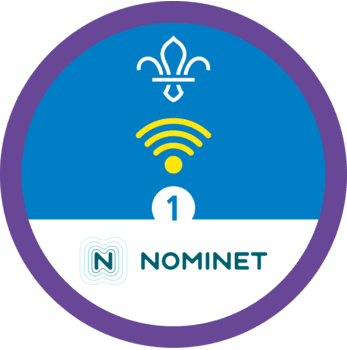
Meme makers
You’ll need
- Pens or pencils
- Scrap paper
Before you begin
- You’ll need to print copies of popular memes with the words removed or covered.
- Brush up on your knowledge and find some examples of appropriate memes that are in line with our values. There’s plenty of information online about what makes a great meme – a quick google will reveal top images, catchy captions, and the most popular memes of the past few years.
- To meet requirement 2 of Stage 3 of the Digital Citizen Badge, ask the group to theme their meme messages around staying safe, what to do if they are made to feel uncomfortable online, and where they can find support. You could use this activity as an introduction to other activities like Is it OK? and It’s just banter.
What’s in a meme?
- Everyone should talk together about what memes are. They should try to think of some examples of memes that are popular at the moment.
In this context, memes are images, videos, or GIFs with funny text or captions that are widely shared online. People usually add to the meme or create their own version when they share it. Memes can also be text-based.
- Everyone should split into small groups.
- Each group should think about key messages from a national or international week such as Internet Safety Week (February), International Day of Peace (September), or Anti-bullying Week (November).
The messages could be about staying safe online, how to be responsible online, or how to make a difference.
- Each group should choose a message and plan how they’ll create a meme to represent it. Their meme should appeal to people their age, and it should be funny and memorable. It also needs to offer information, advice, and support.
- Everyone should choose from the printed-out memes with the words removed. They should add their own messages using marker pens, or by cutting and sticking.
- Each group should share their meme with a different group. Everyone should make sure the memes have a positive message, are short, snappy, fun, and memorable, and appeal to people their age.
- After the leader has checked the memes are appropriate, the person in charge of the group’s social media or website could share the best memes online.
If it’s safe and appropriate, young people could also share their memes on their own social media platform.
Reflection
This activity was all about communicating – in a slightly different way. Memes are a popular way to spread jokes but in this activity, people used them to share a message about positive digital wellbeing. Was it easy to think of a witty or memorable message? It may have been challenging to balance humour with getting the point across. Why are memes good at getting messages across? They’re quick, use popular images and ideas, and are easy to share on social media. Everyone should reflect on how they went about the task and made decisions. What tips would they give to other groups if they did the activity again?
Safety
All activities must be safely managed. You must complete a thorough risk assessment and take appropriate steps to reduce risk. Use the safety checklist to help you plan and risk assess your activity. Always get approval for the activity, and have suitable supervision and an InTouch process.
- Online safety
Supervise young people when they’re online and give them advice about staying safe. Take a look at our online safety or bullying guidance. The NSPCC offers more advice and guidance, too. If you want to know more about specific social networks and games, Childnet has information and safety tips for apps. You can also report anything that’s worried you online to the Child Exploitation and Online Protection Command. As always, if you’ve got concerns about a young person’s welfare, including their online experiences, follow the Yellow Card to make a report.
- Glue and solvents
Always supervise young people appropriately when they’re using glue and solvent products. Make sure there’s plenty of ventilation. Be aware of any medical conditions that could be affected by glue or solvent use and make adjustments as needed.
- Scissors
Supervise young people appropriately when they’re using scissors. Store all sharp objects securely, out of the reach of young people.
- Phones and cameras
Make sure parents and carers are aware and have given consent for photography.
Why not try to create something for a different audience? Challenge the groups to create a meme for younger people who are new to social media, or older people who haven’t grown up with it. What do they need to know, and what meme should they base their creation on?
- Make sure everyone understands some memes before you move on. You may want to bring examples and talk about them together before you get stuck in.
- It’s best to make sure groups have a mix of people with different skills. Not everyone needs to be the best writer or a meme expert, they can work together to create something great.
All Scout activities should be inclusive and accessible.
If the group’s made memes for a specific occasion, why not wait and upload them to social media or a sharing platform so people can see them during the day or week? Turn it into a bigger campaign by creating more positive content – websites such as Childline and Young Minds are full of information and great sources of support.
The power should be in the young people’s hands. They should make the decisions and evaluate each other’s memes.

